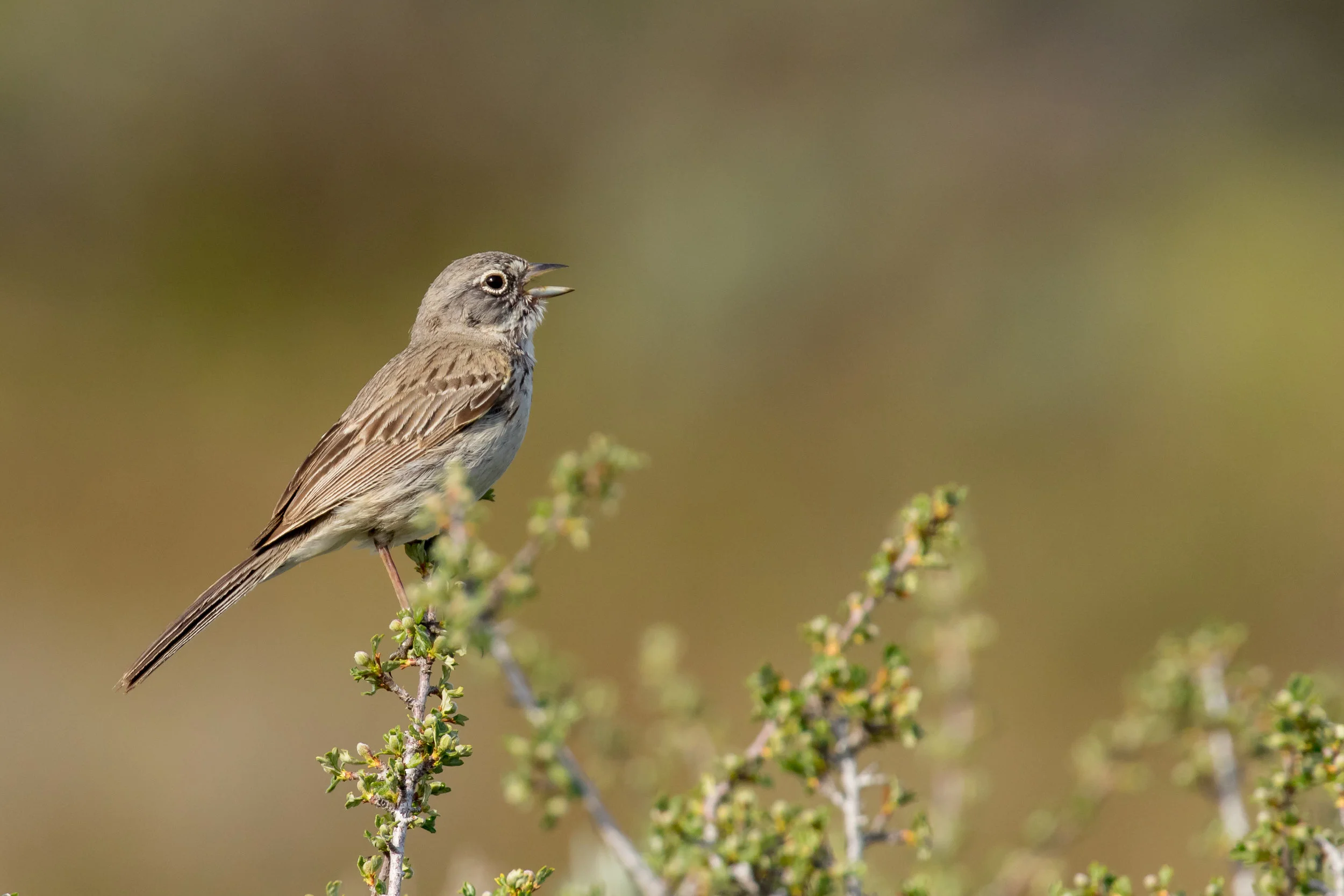Bird of the Month: Sagebrush Sparrow
By Andy McCormick
PC: Mick Thompson (Sagebrush Sparrow)
Scientific Name: Artemisiospiza nevadensis
Length 6 in
Wingspan 8.25 in
Weight: 0.58 oz
AOU Band code SAGS
Formerly part of the Sage Sparrow complex of four subspecies, the Sagebrush Sparrow has been split off by the American Ornithological Union as a separate species and the remaining three subspecies are now grouped and renamed as Bell’s Sparrow A. belli. The Sagebrush Sparrow breeds throughout the Great Basin, which includes parts of Eastern Washington. It has different habitat requirements and does not interbreed with the other subspecies, however, the Sagebrush Sparrow does share the wintering area with Bell’s Sparrow and the two species cannot be distinguished in the field with any certainty. Those seeing these birds on the wintering grounds are advised to identify them all as Sagebrush/Bell’s Sparrow (McCreedy, eBird, 3/6/2014).
The spiza of the genus name is from the Greek referring to a finch. Nevadensis references the State of Nevada, a central area in the Great Basin. Belli is for John Graham Bell (1812-1889), a taxidermist who accompanied John James Audubon on his Missouri River trip of 1843 (Holloway).
The Sagebrush Sparrow is a breeding bird in Washington in the shrub-steppe habitat. It builds a nest low in sagebrush and occasionally on the ground. The nest is a rough open cup of twigs and sticks, lined with grass and sometimes animal hair. Usually 3-4 bluish white to pale blue eggs are deposited. Incubation lasts about two weeks and the young leave the nest in about 10 days. Some pairs raise two broods per year (Kaufman).
The Sagebrush Sparrow is migratory and arrives early on the breeding grounds in mid-February to March. This is the best time of year to see them when they will perch on the top of sagebrush to mark their territory. They will flick their tails while perched. At other times they run along the ground between sagebrush clumps with their tail cocked as they forage for insects, spiders and seeds of grasses and weeds (Bell and Kennedy). Video of its running and tail flicking behavior can be seen at the Macauley Library video. This sparrow winters in the desert scrub of New Mexico, Arizona and Eastern California.
The blue-gray head of the Sagebrush Sparrow contrasts with its darkly streaked brown back and black tail providing good field marks (Dunne). A white mark in front of the eye, that does not go past the eye, and a white malar (moustache) stripe are distinctive. The Sagebrush Sparrow can be confused with the juvenile Black-throated Sparrow A. bilineata , but the Black-throated has a longer eyebrow stripe and no malar stripe. The bill of the Black-throated is also larger (Alderfer).
The Sagebrush Sparrow is a common bird in its habitat and is not considered threatened, but its population is negatively impacted by the introduction of cheatgrass into sagebrush country. Sagebrush Sparrows will leave their former nesting areas once cheatgrass is established (Martin and Carlson). Other threats include the intentional burning of sagebrush to convert it to grassland grazing for cattle and agricultural expansion (Lebbin, et al).


